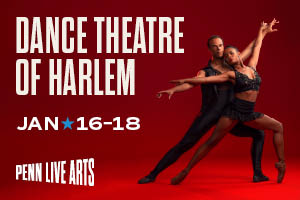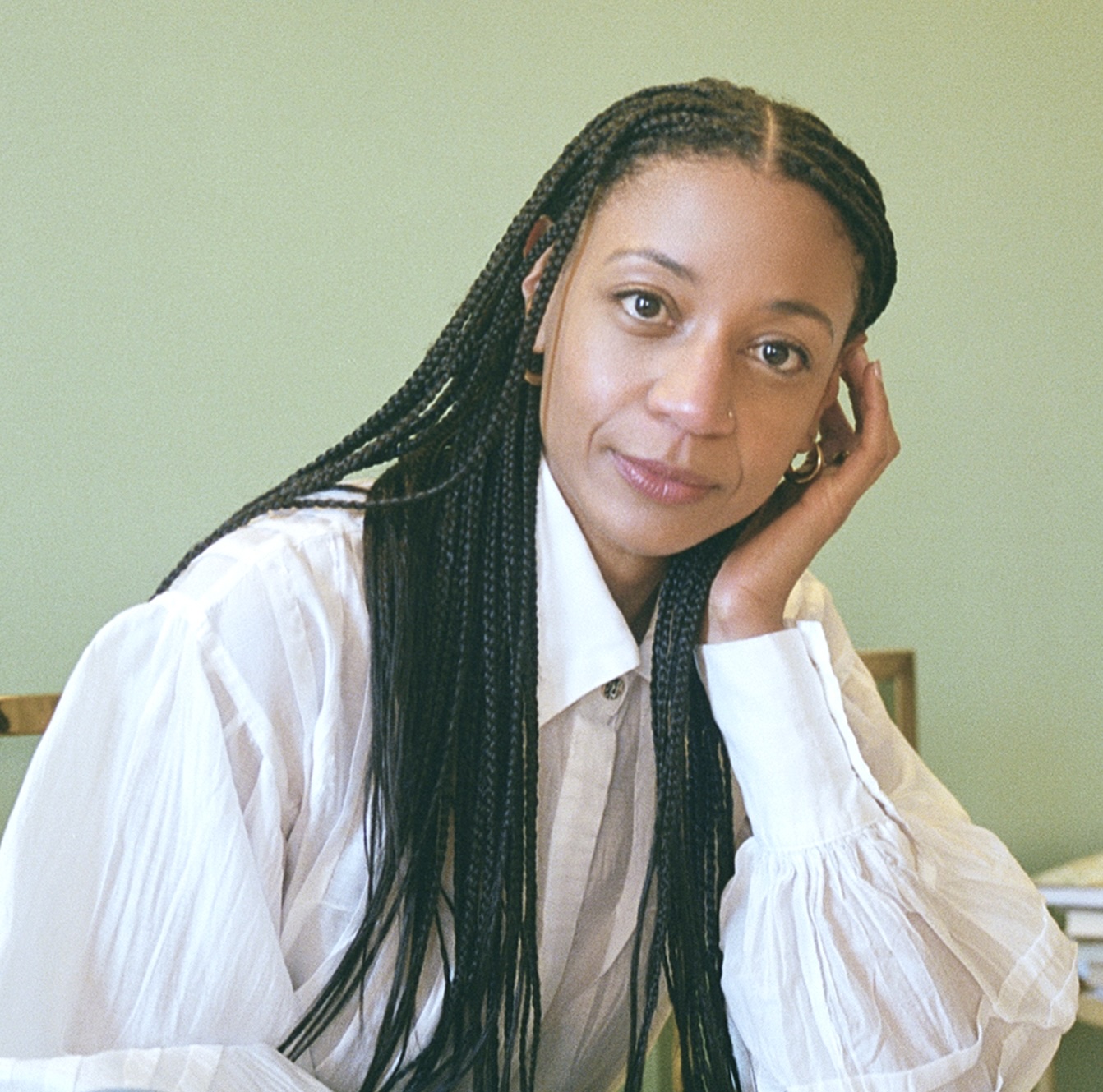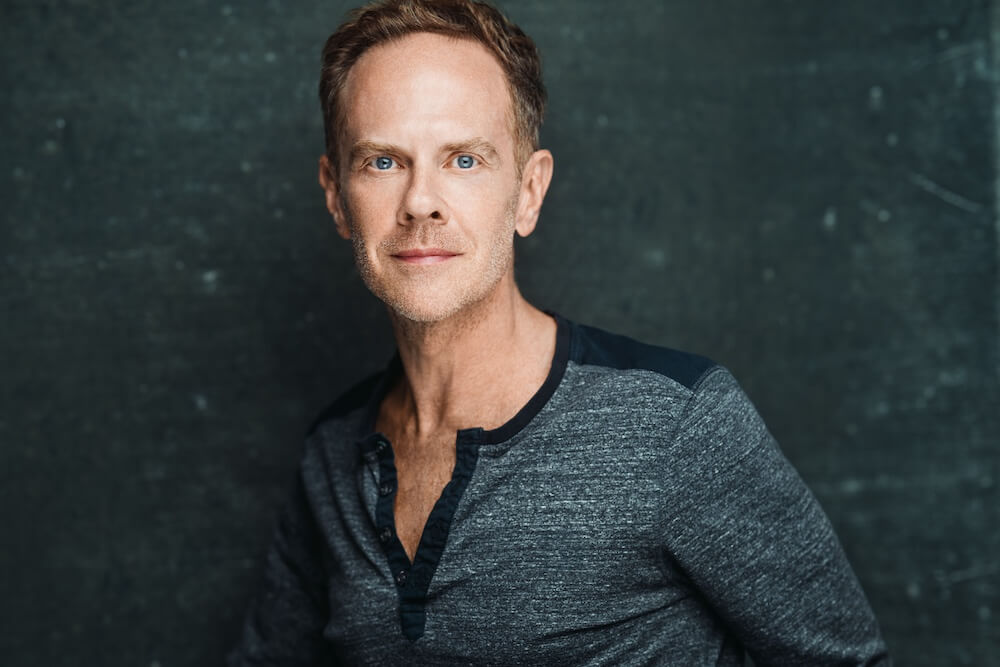Mami Wata, the god of purity and beauty
Of ocean and spirit
Fought her way into the space
Against brick walls and imposing air
She found solace in the bodies of two Black men
Her chosen vessels
Performing artists and art makers yaTande Whitney V. Hunter and Jude Sandy of Denizen Arts premiered their new work, Walk The (Pink) Elephant at the Performance Garage on September 14-16. The work was in collaboration with musician Alex Shaw, a performer, percussionist, and composer whose work integrates music, culture, and activism. After a process of research and consulting with Zane Brooker, a native Philadelphian dancer whose cultural work has been centered on promoting HIV/AIDS awareness, they memorialize many generations of queer cultural workers of color decimated by HIV/AIDS through this multidisciplinary storytelling.
Walk The (Pink) Elephant is a remembering of those who transcended into the afterlife, a naming of the pain and suffering of Black gay men during the AIDS epidemic, and a performance of resistance, giving space to narratives quickly and often forgotten by mainstream society. In the performance, yaTande performed the ritual of countless people dying, a record played on repeat, as each white sheet hung on the ceiling fell onto his body, enveloping him into a dance battle for one’s last breath.
The work began with Alex Shaw opening the space, and leading the audience from the lobby to the stage. Upon entering, I quickly glanced at Jude Sandy. Covered with white powder, Jude walked a big circular path, tracing the ends of the stage, while yaTande followed behind him. They were ethereal emblems walking around the stage in what looked like a ceremonial march. YaTande wore a bowler cap, beads across his chest, black pants, and a cane. Evoking 19th-century industrial workers, the look also reminded me of Bob Fosse and those who came before him in the lineage of American dance: the Cakewalkers – African Americans dressed like Europeans – in a dance mocking their oppressors. Through a series of solo dance segments, yaTande expressed the stories of LGBTQ men in New York City at a time when many flocked there for a new life, for new careers, and for freedom to express gender and sexuality. The work involved a lot of repetition and walking a circular path and being enveloped by white duvet sheets. This abstraction cleverly signified ritual and emphasized the tragically high numbers of community members lost to the HIV/ AIDS plague. From the perspective of a dance composer, I found that the artists introduced and fleshed out emotion and story in an appropriate amount of time. I have seen dances choreographed attempting to evoke the spirit through quick steps and quick transitional scenes…. as if spiritual work isn’t about the ritual….as if spiritual work happens within a 5-6-7-8 count frame.
Alex Shaw played the clave rhythm, conjuring the energy of the “party,” the rumba. This perhaps was a portrayal of the time when the LGBTQ community found a safe space to express a same-gender-loving “love dance.” YaTande expressed joy as resistance reminiscent of dance and drag performances in ball culture, bringing trance to the spaces of dance, gay, and club. I remember this energy clearly as a queer person who lived in New York in the late 90s. YaTande took us on a journey of joy and grief, celebration and mourning. Jude’s words wove the stories together with his exquisite crafting and delivery, personifying the messenger of death.
The work ended with a solo by yaTande. His back undulated articulately, pliant as the serpent god Damballa, a deity Katherine Dunham spoke of after her anthropological research in Haiti. YaTande invited the audience to dance, we circled around him as he performed a trance. Jude followed him shaking the maracas, an instrument often made from nature, reminding us all of all of the sounds from the earth. Perhaps Jude was bringing him back to his roots.
How challenging was it to tell stories with metaphysical ideas in a black box proscenium-style stage? I have always been curious about the performativity of transcendence while being in close proximity to the audience. I ask this because during the part when the audience was invited onto the stage to make merry, the Executive Director of Performance Garage, Jeanne Ruddy, directed me to dance MORE, telling me that the piece called for the audience to dance and take center stage. As someone who has choreographed community-engaged participatory performances throughout Philadelphia, the instruction “to dance” felt contrived and obtrusive. After experiencing the ritual, I was jolted after being incited to dance. A moment of liberation abruptly awakened me to the reality of dance as a business production.
I left posing a question: how powerful would this show be if it was experienced elsewhere?
Denizen Arts, Walk The (Pink) Elephant, Performance Garage, Free Fringe Philly, September 15-17, 2020






